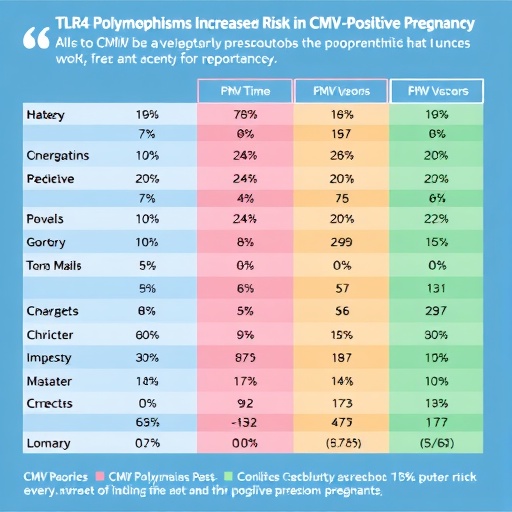
In a groundbreaking new study, researchers have unveiled a transformative approach to enhancing student engagement in the field of bioengineering through arts integration. This innovative method is being implemented in an undergraduate general education course, aiming to bridge the gap between technical knowledge and creative expression. The study, conducted by Georges and Kahn, brings to light the crucial role that arts can play in fostering a deeper understanding and appreciation of complex scientific concepts among students.
The integration of arts into the curriculum is not merely an aesthetic choice; it represents a strategic pedagogical tool designed to cater to diverse learning styles. By incorporating artistic elements such as visual art, music, and performance into the bioengineering syllabus, the course seeks to engage students on multiple sensory levels. This multifaceted approach can help demystify intricate bioengineering principles, making them more accessible and relatable. Students are not just passive recipients of information; they become active participants in their learning journey.
One of the key insights from the research is the observation that students who engage with bioengineering through artistic mediums exhibit increased enthusiasm and motivation. Instead of viewing bioengineering as a daunting subject filled with complex equations and abstract theories, students are encouraged to explore their creativity. This shift in perspective is critical in developing a passion for the sciences, particularly in a field that is often perceived as rigid and formulaic.
Furthermore, the authors of the study highlight the importance of collaboration in this interdisciplinary approach. By working alongside artists, bioengineering students gain invaluable experience in teamwork and communication. These skills are essential not only in academia but also in the ever-evolving job market, where employers increasingly value the ability to collaborate across disciplines. The integration of arts fosters an environment conducive to innovation, allowing students to generate creative solutions to real-world engineering challenges.
The findings from this study are particularly timely, as educational institutions around the globe are being urged to rethink traditional teaching methodologies. The global shift towards experiential learning models has prompted educators to seek out ways to make science instruction more engaging and meaningful. Arts integration aligns seamlessly with this trend, providing a framework for experiential learning that captivates students’ interests while reinforcing core scientific concepts.
Moreover, the researchers argue that arts integration plays a pivotal role in enhancing critical thinking skills. When students are encouraged to interpret and express scientific concepts through art, they are compelled to analyze and synthesize information in new ways. This not only deepens their understanding but also enhances their ability to think critically about the implications of their work. The ability to connect seemingly disparate ideas is a hallmark of innovative thinkers and is increasingly crucial in today’s interdisciplinary landscape.
In addition to fostering critical thinking, the study emphasizes the potential of arts integration to promote emotional intelligence. Engaging with the arts allows students to explore their feelings and responses to bioengineering concepts, thereby creating a more cohesive and empathetic understanding of the subject matter. This emotional engagement can lead to a greater sense of ownership and responsibility among students, encouraging them to consider the ethical implications of their work and the impact it has on society.
Despite the promising findings, Georges and Kahn acknowledge the challenges of implementing such an integrative approach within the conventional educational framework. Resistance to change, coupled with institutional constraints, can pose significant hurdles for educators looking to adopt arts integration in their curricula. However, the potential benefits for student engagement and learning outcomes make a compelling case for overcoming these obstacles.
As the study gains traction, there is hope that it will inspire similar initiatives across various disciplines. The model established in this undergraduate bioengineering course serves as a template for other programs seeking to enhance student engagement through creative methods. By taking a cue from this research, educators can begin to reimagine their curricula, ensuring they are meeting the needs of the 21st-century learner.
In conclusion, the integration of arts within a bioengineering curriculum marks a significant shift in how we approach education in the sciences. By embracing creativity alongside technical knowledge, students are offered a more holistic learning experience. The findings of Georges and Kahn provide a roadmap for enhancing engagement in higher education, proving that when art and science intersect, the result can be a vibrant and enriched educational landscape.
While the study is still in its early stages, the implications for future research are vast. Scholars and educators alike are encouraged to delve deeper into the effects of arts integration on student learning outcomes across various fields. The dialogue around education must continue to evolve, embracing innovative and interdisciplinary approaches that prepare students for the complexities of the modern world.
This pioneering research is set to pave the way for a redefined understanding of bioengineering education, one that not only values technical proficiency but also recognizes the essential role of creativity and artistic expression in fostering a passionate and engaged generation of engineers.
Subject of Research: Arts integration in bioengineering education
Article Title: Arts Integration in an Undergraduate General Education Course to Improve Engagement in Bioengineering
Article References:
Georges, P., Kahn, S. Arts Integration in an Undergraduate General Education Course to Improve Engagement in Bioengineering.
Biomed Eng Education 5, 87–93 (2025). https://doi.org/10.1007/s43683-024-00162-6
Image Credits: AI Generated
DOI: https://doi.org/10.1007/s43683-024-00162-6
Keywords: Arts Integration, Bioengineering, Student Engagement, Higher Education, Interdisciplinary Learning, Critical Thinking, Emotional Intelligence.
Tags: active learning in bioengineeringarts integration in bioengineeringbridging technical knowledge and creativitycreative expression in educationenhancing student engagement in scienceinterdisciplinary teaching methodsmusic and performance in learningpedagogical strategies for diverse learnersstudent motivation through artstransformative education approachesunderstanding complex scientific conceptsvisual art in STEM




